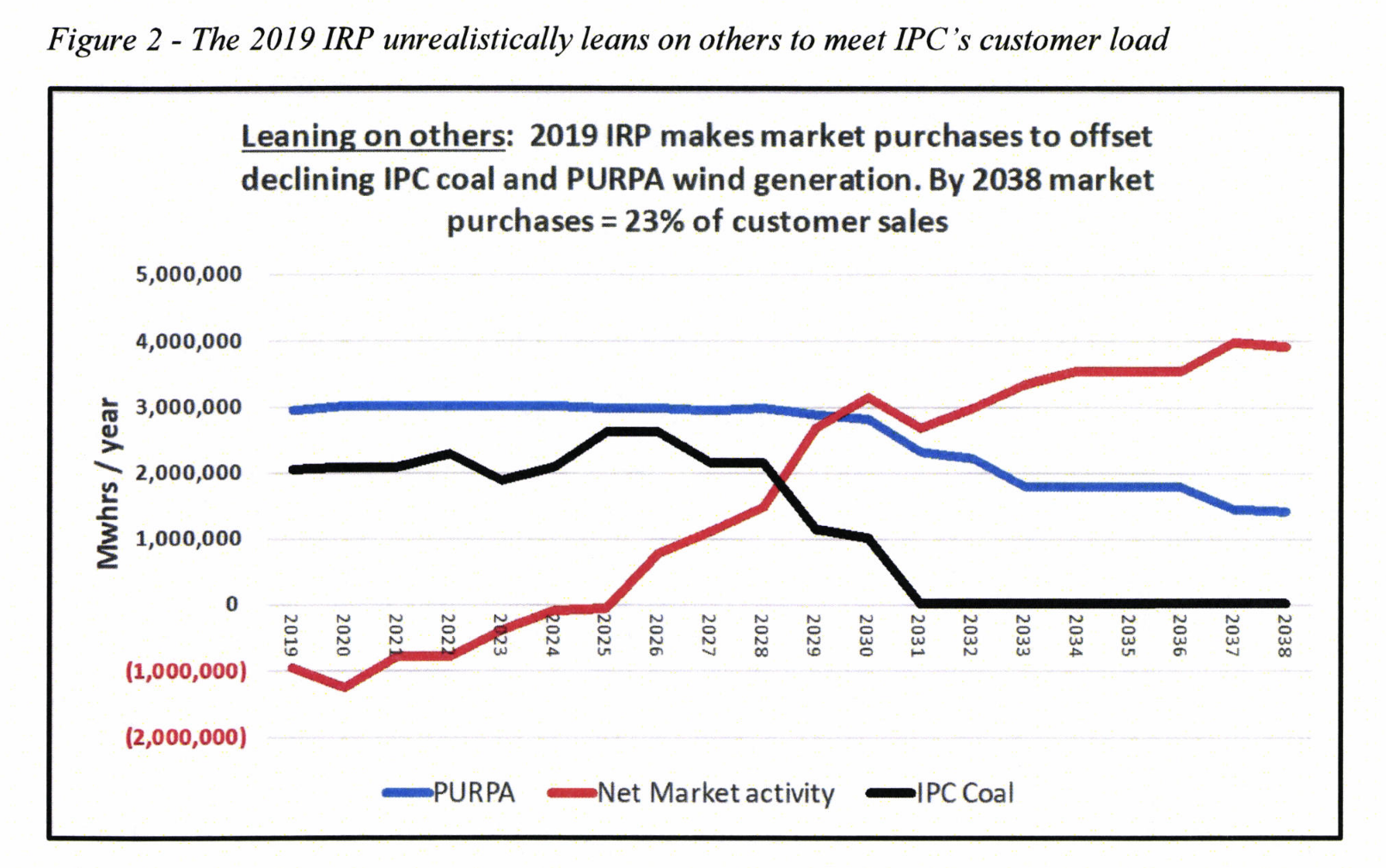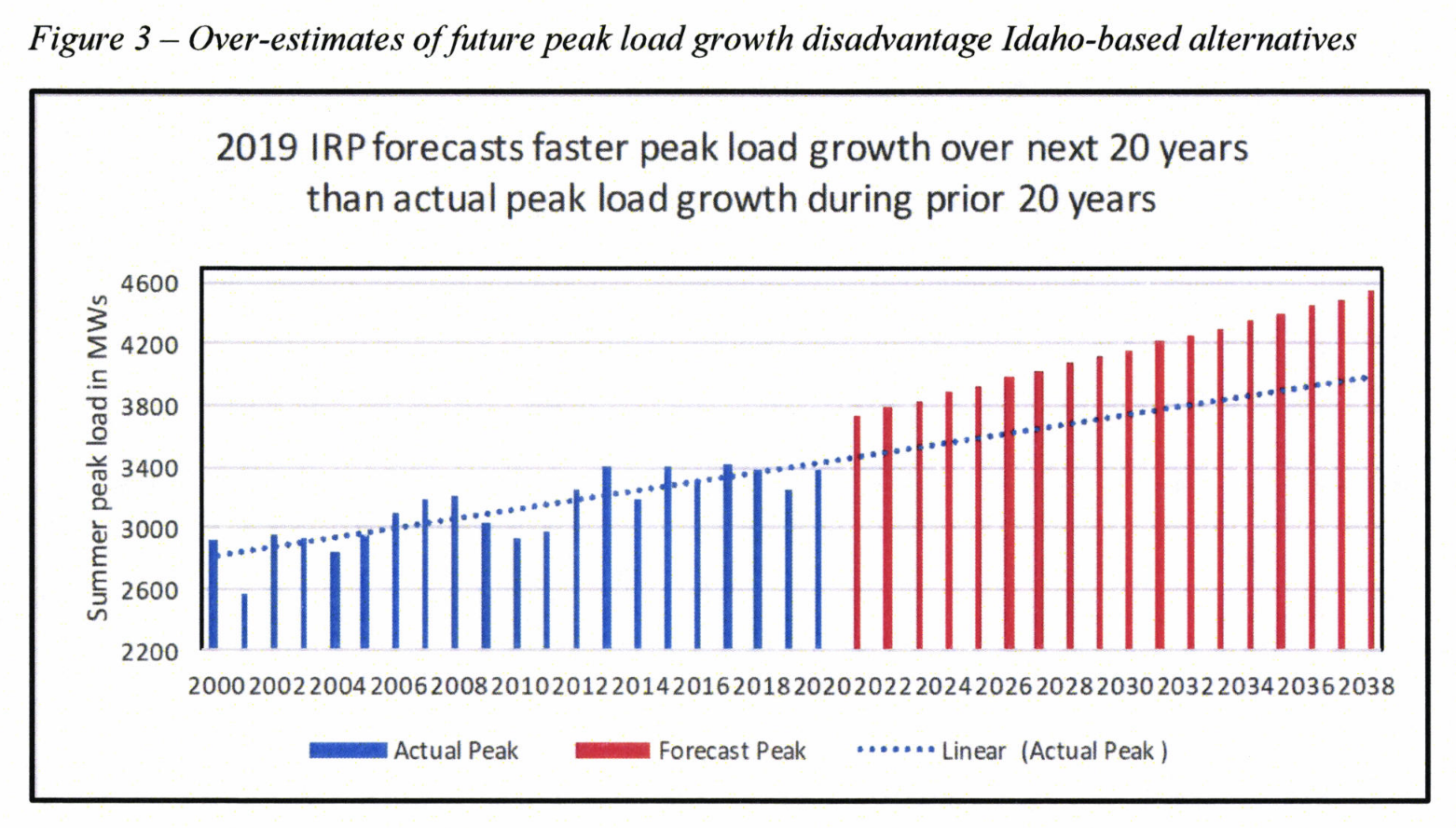As we did with last month’s blog post, Idaho Sierra Club will continue to provide regular updates following each of Idaho Power’s monthly Integrated Resource Plan (IRP) Advisory Council meetings to let you know what your utility is up to and how you can make your voice for clean energy heard.
Here is an updated list of everyone who currently has a seat on the IRP Advisory Council: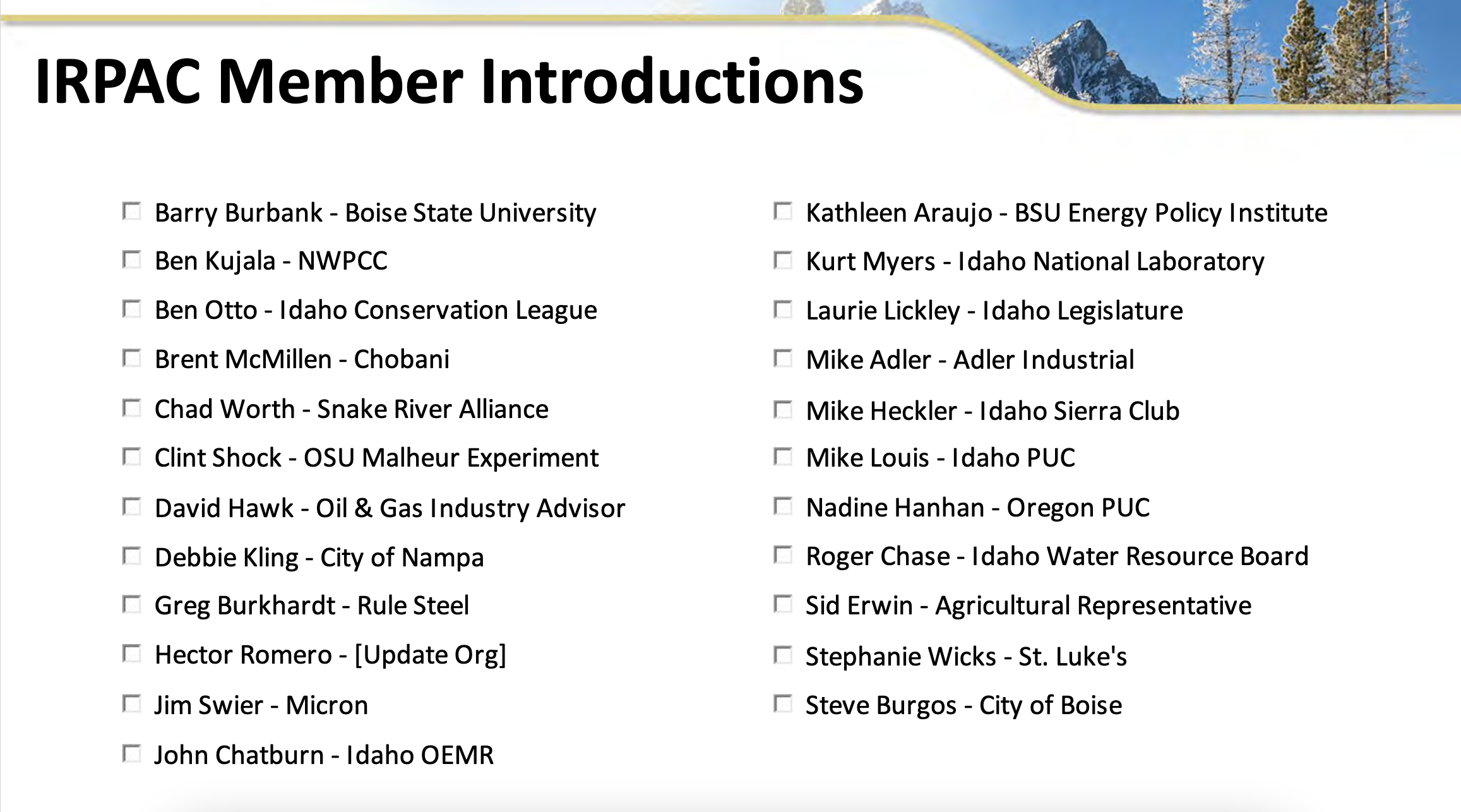
During the March IRP Advisory Council meeting, Idaho Power staff presented on a number of topics of interest to us as climate and clean energy advocates, including the Texas electricity crisis, wind farm contracts, “natural” gas prices, and customer load forecasts, including electric vehicle adoption predictions. Below we’ll provide some brief descriptions and outline some of our hopes and concerns. You can find the full presentations on Idaho Power’s IRP website.
Texas Electricity Crisis & Transmission
Idaho Power took the opportunity to review what happened in Texas during the recent tragic events that unfolded in February when severe winter storms devastated Texas’s electrical grid and left residents with limited power, heat, water, and food, taking several lives.
Idaho Power accurately described how our situation here in Idaho is quite different from Texas for a number of reasons, and why we fortunately aren’t as likely to experience a similar scenario. One thing they emphasized was how Texas operates in an isolated grid, whereas Idaho is part of a “Western Interconnection” grid that spans the whole western U.S. and Canada (see their slide below), which allows us to import energy from other places when we face potential energy shortages with our resources here in-state--something Texas couldn’t do.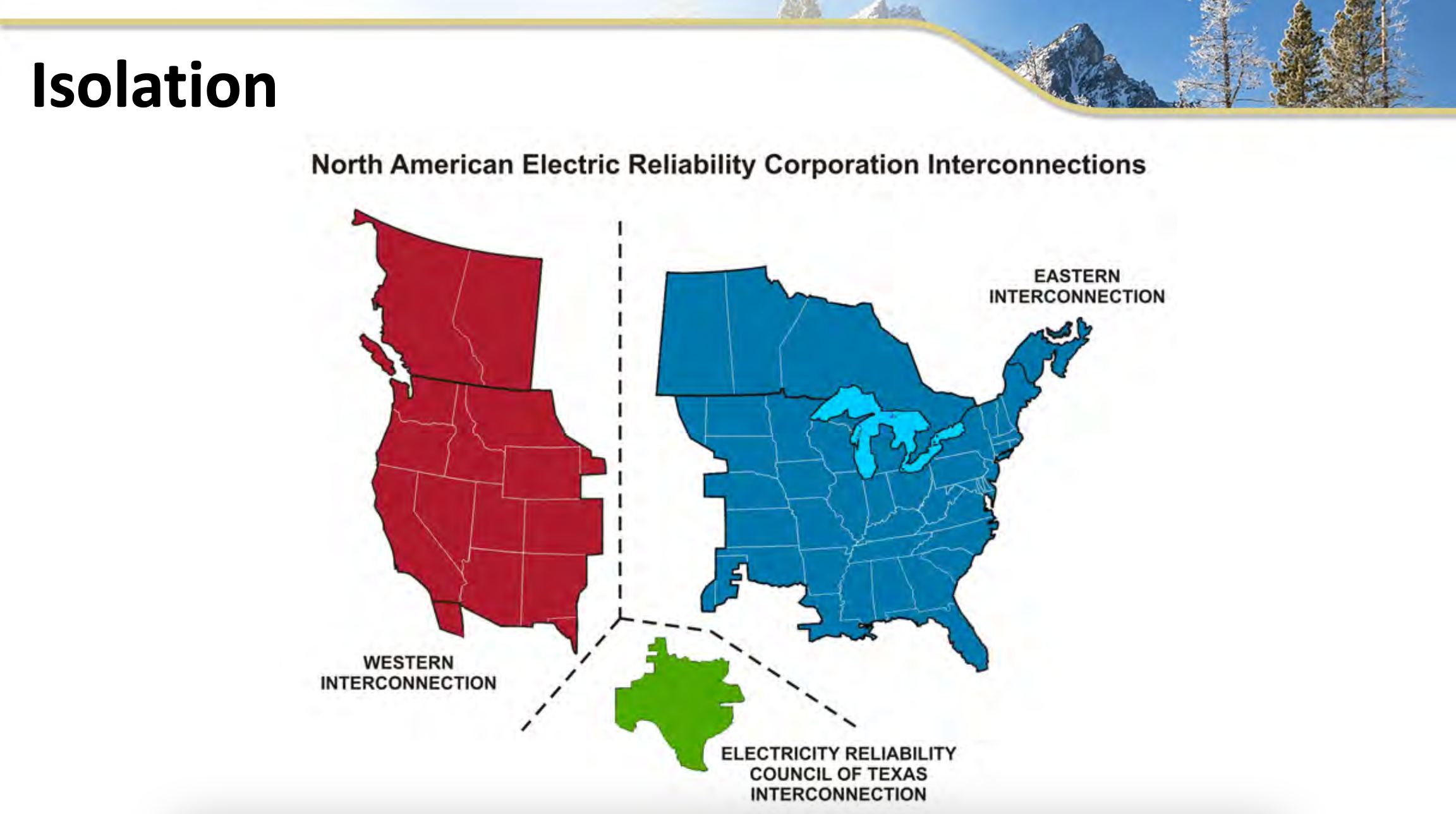
We agree that having these interstate transmission lines is important, but we also think Idaho Power needs to do more to develop new, clean, resilient energy resources right here in Idaho as part of Idaho’s clean energy economy. Our own analysis shows that Idaho Power is increasingly relying on imported energy from out-of-state (partly due to its proposal to build a multi-million dollar Boardman to Hemingway transmission line into Oregon in 2026), which isn’t a sustainable solution for Idaho (see the red line in the graph below made by Mike Heckler).
Wind Farm Contracts
In the graph above you also see the blue line labeled “PURPA,” which decreases over time. PURPA stands for “Public Utilities Regulatory Policies Act,” which was passed in Congress way back in 1978 and created a requirement that utilities purchase the energy from “Qualifying Facilities” that are small power producers. Much of Idaho Power’s PURPA contracts are wind farms, with some solar, hydro, biomass, and cogeneration (see their graph below). Since Idaho Power prefers to own its own power facilities, and doesn’t like to accommodate intermittent wind energy, it’s not a big fan of PURPA and has historically tried to undercut PURPA projects.
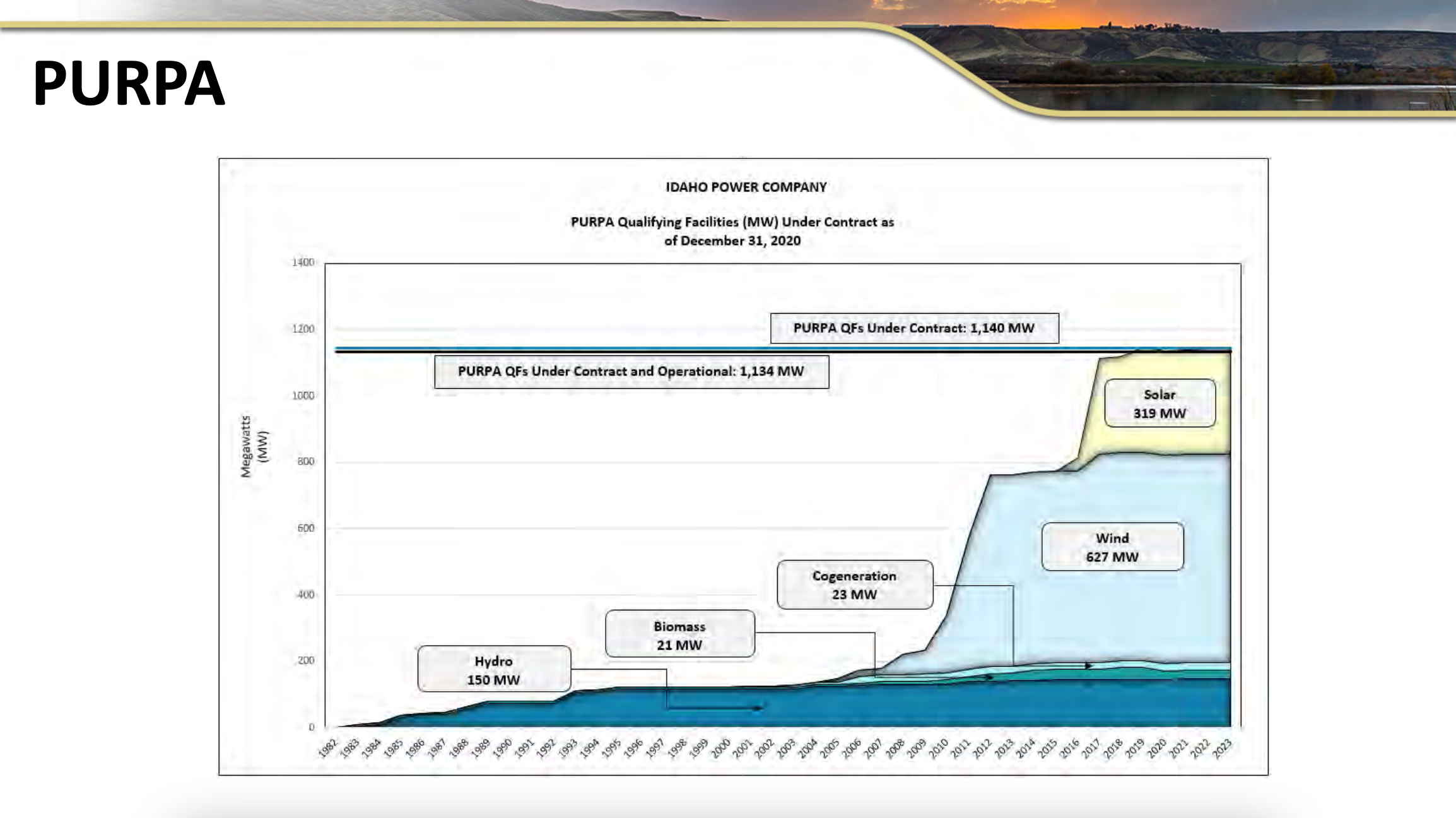
That’s why it doesn’t come as a huge surprise that Idaho Power (as shown in our graph in the previous section and Idaho Power’s own graph below) is currently assuming that all their current wind contracts will not be renewed, and thus will decrease over time--an assumption we don’t think is fair or prudent. There is plenty of time and opportunity for these wind project owners to renew their contracts, possibly even upgrade their turbines to get even more power out of the systems, and offer Idaho Power low-cost clean energy to contribute to its “Clean by 2045” goal. They should not make a blanket assumption in their planning models that all these wind farms will simply disappear, and for a company trying to reach 100% Clean Energy by 2045, dropping all these wind farms through 2040 doesn’t look too good.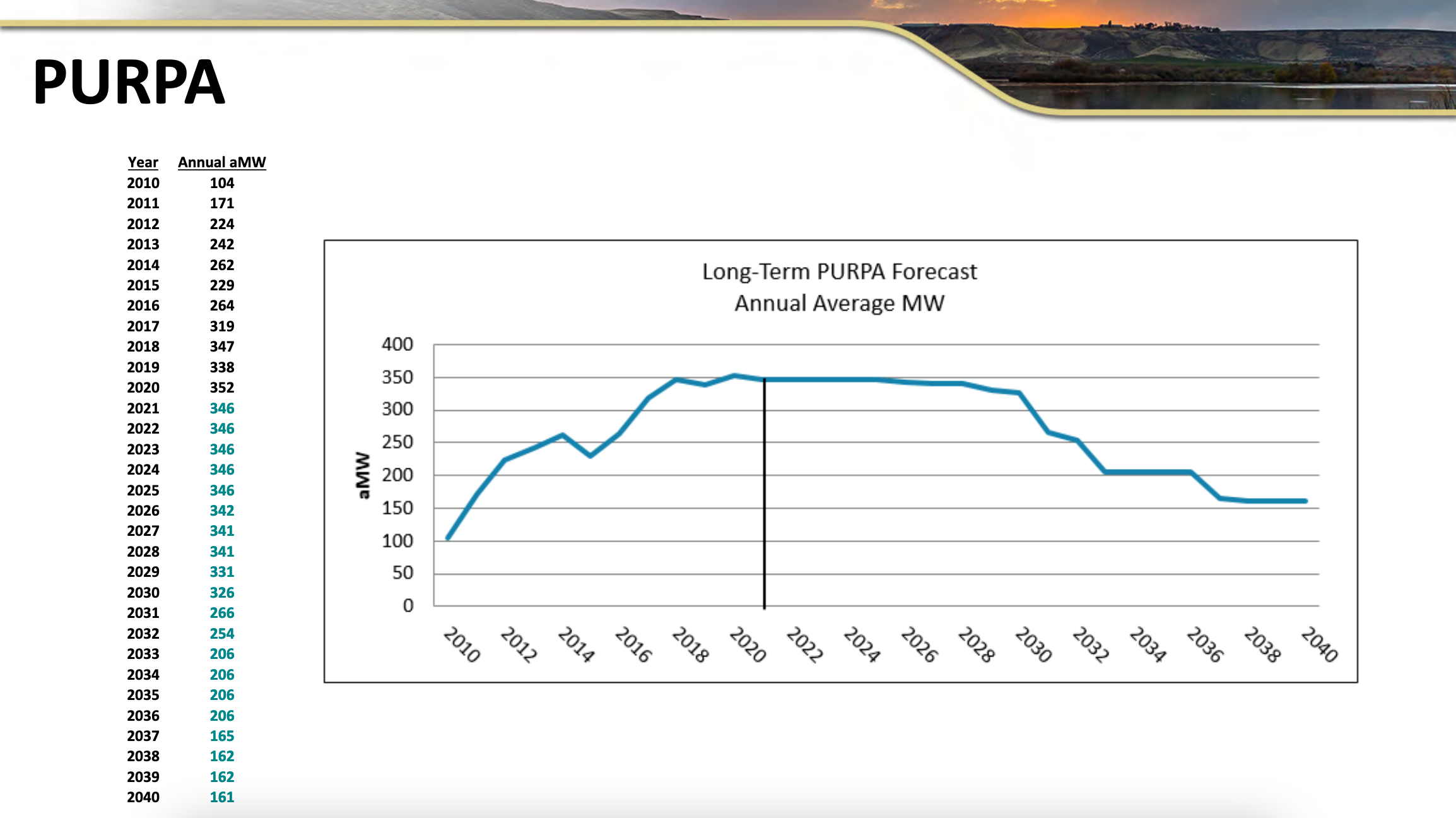
Methane Gas Price Forecasting
Unfortunately, the entire “natural” methane gas forecasting presentation was confidential from a third party consultant, Platts, so we can’t share any of that information publicly. The assumptions that Idaho Power makes for future methane gas prices has a huge influence on whether its modeling software will choose a new gas plant or a new solar plant for the company to build in the future. We think Idaho Power should use publicly available methane gas price forecasting data to be more open and transparent with this critical input into the IRP. We also believe that if Idaho Power is willing to invest heavily in a third party analysis for methane gas prices, they should do the same for battery storage and renewable energy price forecasts, whose prices continue to plummet and are predicted to be extremely affordable into the future.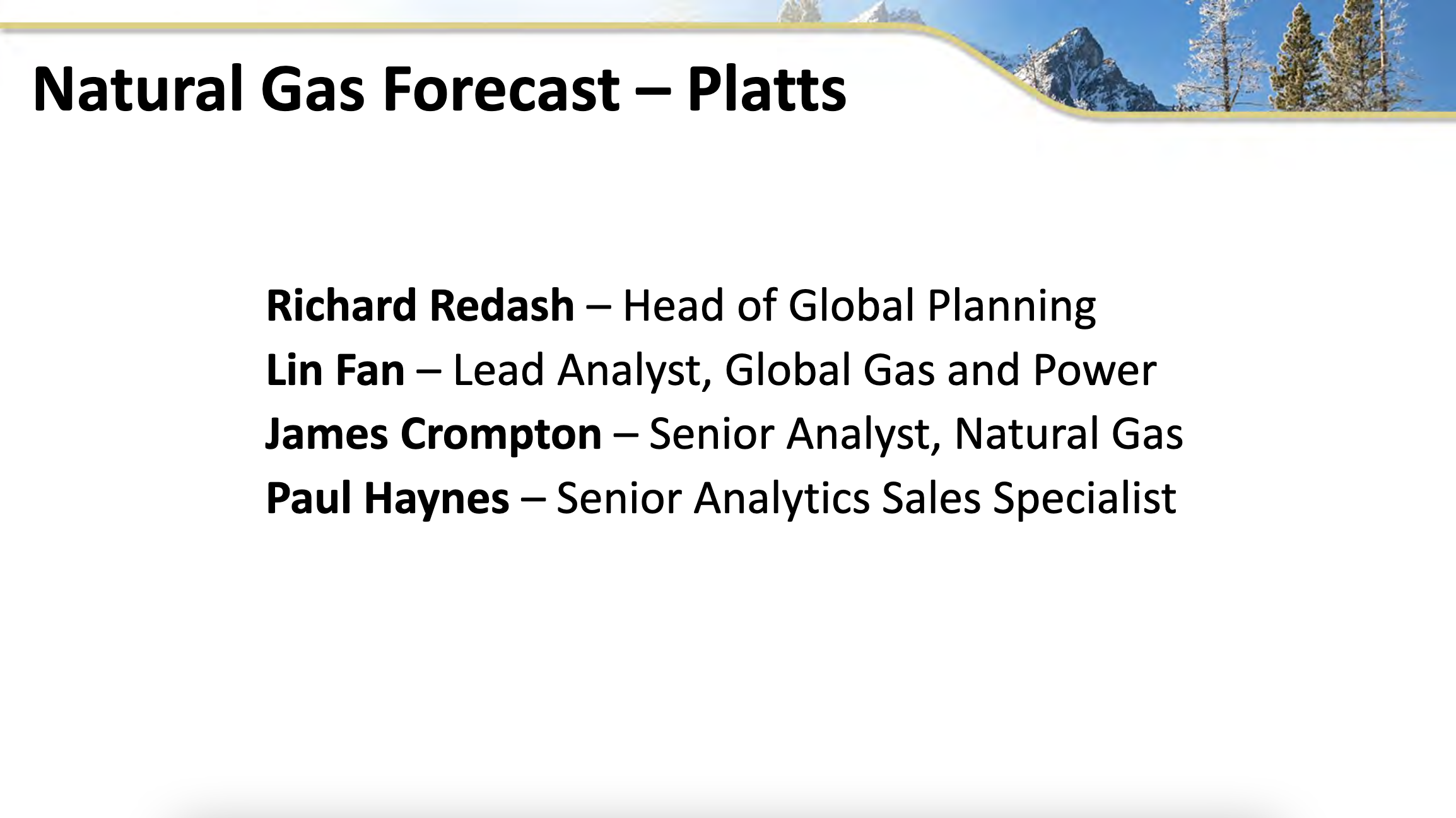
Load Forecasting (Future Power Needs)
Lastly, Idaho Power presented on another topic that has a big impact on it’s 20-year plan: it’s forecasted customer load (the amount of power its customers will use in the future). This will determine how much “new energy” the company needs to build/acquire to meet future energy needs. Most of the load forecasting data from their presentation is confidential, so we can’t display that in detail here, but they showed predictions that as Idaho’s population and businesses continue to grow, the need for more energy will continue to grow, too. Their base level forecasts included things like some energy efficiency, more customer-owned solar, and more electric vehicles, and they plan to run more “sensitivity” studies to see how the IRP outputs are affected if any of those predictions go up or down (thanks to the advocacy of groups like ours!).
We have a few concerns about their base level load forecasts. Firstly, they don’t take into account the number of homes and buildings that will switch from gas furnaces to efficient electric heat pumps in the next 20 years, which we hope and predict will be significant as we move to a fossil-free economy. Their customer-owned solar and electric vehicle forecasts were also really weak. For example, the data here is confidential, but you can see that the graph below only goes up to 50,000 vehicles by 2040 - we predict there will be significantly more electric vehicles on the road by then.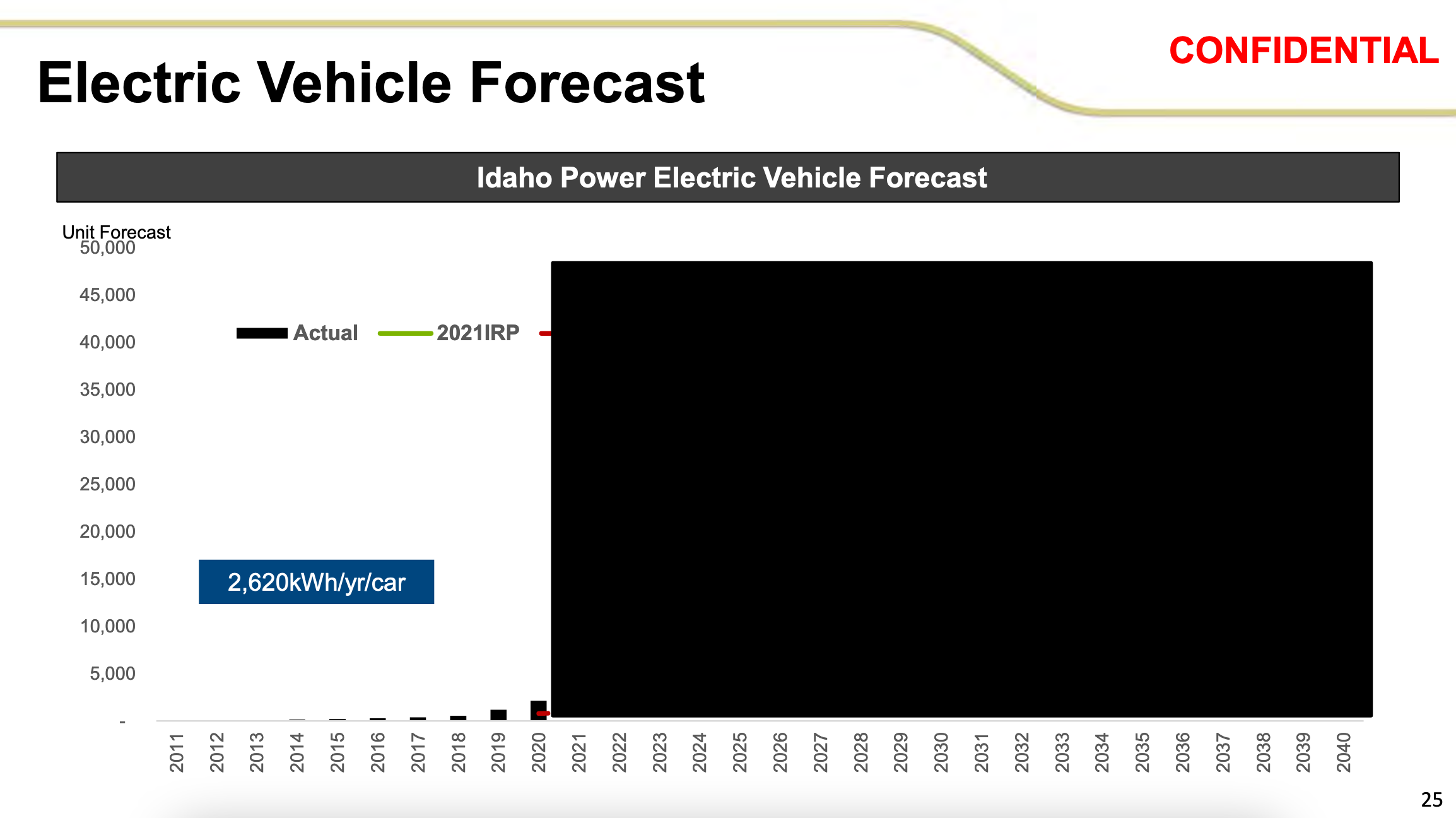
And lastly, their predictions for peak load growth, which measures the amount of energy that will be needed on the most energy intensive day of the year (when the temperature is hottest and air conditioners, irrigation pumps, and other equipment are all running full steam) seems exaggerated (see red bars in graph below, made by Mike Heckler). Peak load growth is actually what drives Idaho Power to build new gas plants or delay retiring coal plants, using this “need for more energy” as a justification to build/maintain those resources, so it’s important to get that number right, and reduce it as much as we can. Despite massive growth in Idaho’s population in the last 10 years, Idaho Power’s peak load actually stayed relatively flat (see blue bars in graph below), so predicting such a steep rise in peak load into the future doesn’t seem accurate. That steep rise is also not adequately taking into account opportunities to reduce that peak load through energy efficiency, solar energy, and other measures. While it’s important to plan for the uncertainties that the future holds, we think Idaho Power can take a more accurate approach.
What You Can Do
As an Idaho Power customer, you have every right to participate in this process and make your voice heard. This is your utility, and your energy future. And Idaho Power needs to know that customers are watching closely and expect results that actually align with its stated clean energy goal.
Tell Idaho Power where you want your energy to come from over the next 20 years using their IRP Comment Form. Share some of your thoughts after reading the above. Also, feel free to pose questions, and Idaho Power’s team should get back to you with answers.
You can also engage with our team here at Idaho Sierra Club around these issues. Please reach out to our Director Lisa Young at lisa.young@sierraclub.org to ask questions or learn more about how to get involved.
Lastly, share this information with your friends, family, and neighbors. Knowledge is power, and the more informed customers are about their electric utility, the more we’re able to collectively advocate for the clean energy future we know we need. Share this blog and some of these graphs on your social media and spread the word about how Idaho Power can improve its clean energy planning.
